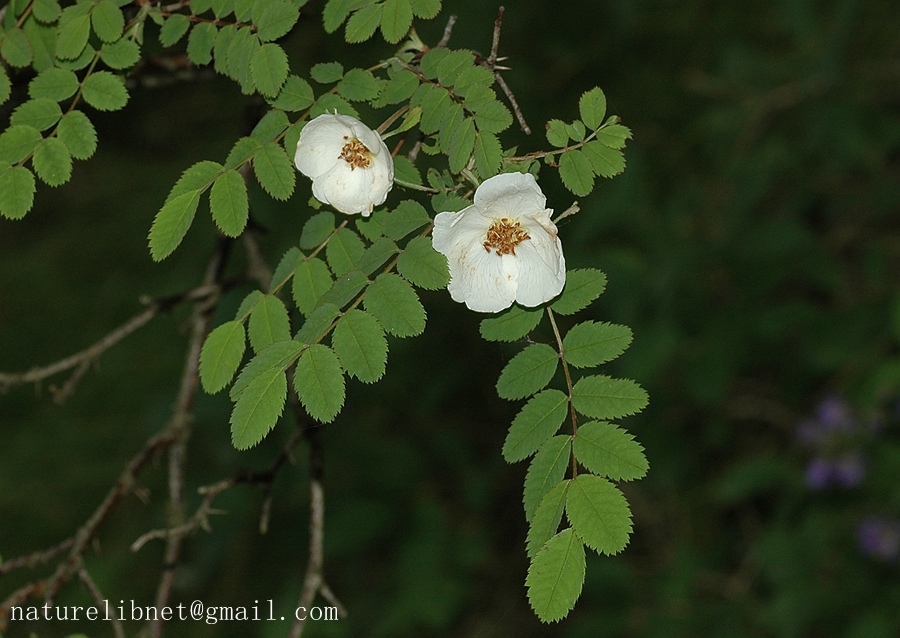- Scientific Name: Rosa omeiensis Rolfe
- Ref: Bot. Mag. 138: t. 8471. 1912
- Synonyms: Rosa sorbus H.Lév., Rosa sericea subsp. omeiensis (Rolfe) A.V.Roberts
- Chinese Common Name: 峨眉蔷薇 Éméi qiángwēi, 刺石榴 cì∙shíliú
- Family: Rosaceae
- Genus: Rosa
- Distribution: Abies forests, thickets, scrub, pastures, hillsides, slopes; 700–4000 m. Gansu, Guizhou, Hubei, Ningxia, Qinghai, Shaanxi, Sichuan, Xizang, Yunnan.
- Photo: 07/14/2009, Mt. Taibai, Qinling
Shrubs erect, 1–4 m tall. Branchlets slender; prickles absent or if present, paired below leaves, terete, straight, to 7 mm, abruptly flaring to a broad base, or prickles winglike, to 1.5 cm and 3 cm in diam.; bristles absent or if present, dense. Leaves including petiole 3–6 cm; stipules mostly adnate to petiole, free parts triangular-ovate, margin serrate or entire, sometimes glandular; rachis and petiole with a few small prickles; leaflets (5–)9–13(–17), oblong or elliptic-oblong, 8–30 × 4–10 mm, abaxially glabrous or pubescent, glandular or not, adaxially glabrous, with concave midvein, base rounded-obtuse or broadly cuneate, margin acutely serrate, apex acute or rounded-obtuse. Flower solitary, axillary, 2.5–3.5 cm in diam.; pedicel 6–20 mm, glabrous; bracts absent. Hypanthium obovoid or pyriform, glabrous. Sepals 4, lanceolate, abaxially subglabrous, adaxially sparsely pubescent, margin entire, apex acuminate or long caudate. Petals 4, white, obtriangular-ovate, base broadly cuneate, apex emarginate. Styles free, shorter than stamens, villous. Hip bright to deep red or yellow, obovoid or pyriform, 8–15 mm in diam., glabrous or glandular-pubescent, with persistent, erect sepals; pedicel yellow, tapering to hip, 6–20 mm, stout, fleshy, glabrous. Fl. May–Jun, fr. Jul–Sep. (Flora of China)
